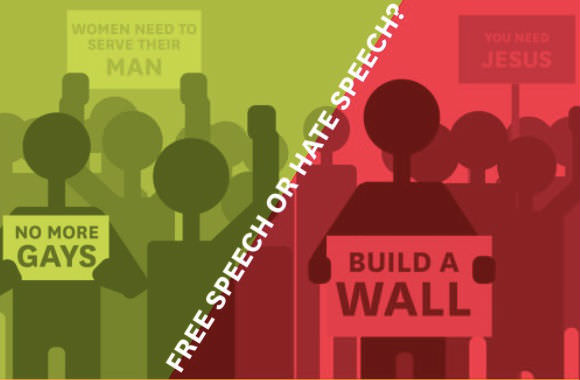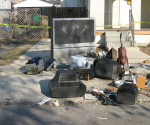Hate Group’s Audience: It’s wider than you think
Put a magnifying glass on the ingredient list of hate speech, and you will realize that it’s full of toxins that have no place in a civilized society and the entire political arena. Surprisingly, the number of hate groups in the United States continues to grow. The worst news is that the online hate is infiltrating the politics and social media at an alarming rate. The question is; where do hate groups get an audience?
According to a post published on Twiends, two of the United States’ tiniest territories account for the largest percentage of national intolerance. The US political epicenter, Washington D.C, is among the nation’s significant well of hateful sentiments. This region has a high rate of Twitter and other social network users who follow hate groups. Approximately 70 people in every 10,000 residents are associated with a hate group.

The hate map in the US
Simply by being on Twitter doesn’t offer credence to any hate group’s tweets, comments, and other forms of content they share on this social platform. However, the amassing followers of these groups heighten the online visibility and give strength to their hateful, biased agendas. Different studies reveal that for hate groups with more than 5,000 followers, the @FAIRImmigration (Federation of American Immigration Reform) had the highest content engagements and most substantial number of followers.
The group has more than 72,000 accounts following them. Federation of American Immigration Reform is an organization based in Washington D.C. It’s primary aim is to influence legislation to limit the number of immigrants allowed into the United States. Check their Twitter bio, and you will realize that it ends with the hashtag #NoAmnesty to solidify their credo.
The Southern Poverty Law Centre (SPLC) published a ‘hate map’ in its quest to understand the hate landscape in the United States. The hate map reveals 26 hate groups with Washington D.C’s 177 square kilometers. A larger number of these groups were labeled as the ‘group’s headquarters.’ According to SPLC’s data, D.C’s number of hate groups’ followers was approximately five times higher than Delaware that has approximately 15 hate group followers in every 10,000 people.
The YWCA Delaware recently hosted an anti-racism event to discuss the increasing number of hate groups and disempower them. Among the top five states featuring the highest number of hate organizations Twitter followers, the last three had similarly sized numbers compared to the top two states. For instance, Tennessee, Indiana, and Alaska had between 8.7 and 10.5 hate groups’ followers for every 10,000 people.
Delaware has less than a million residents. However, the state is home to the largest number of hate group Twitter followers in at least four of the top six hate groups categories. These categories include anti-Muslim, white nationalist, anti-LGBT, and black nationalists.
More than just hate groups
The speed at which online hate spreads is alarming. A few hate words can begin to echo on Twitter and other social networks, and within a short time, thousands of followers take the sentiments seriously. This is always an opportunity for hate groups to finally plug in their movements into the mainstream circuit.
As false narrative and hate sentiments flow through Twitter and other internet’s popular networks, intermingle with legitimate information, and that makes it difficult for people to resist the hate speech. It infiltrates the politics and the entire society. For instance, in 2017, an incident in Delaware occurred during which two lawmakers (Republicans) almost left a Senate session during Muslim prayer. That simply demonstrates how hate can infiltrate even the politicians and how specific xenophobic can be demonstrated without any meaningful repercussion.
Besides, in Indiana, some community members have been publicly showing their outspoken support for the trending white nationalist ideology. Matthew Heimbach, (dubbed ‘the next David Duke’) has openly rallied behind this cause as a speaker in big events and has been issuing out ideological propaganda.
Extremists and hate groups thrive on the doubt that some ideologies, social classes, and leaders make ‘other people look bad.’ Thus, some comments and acts associated with key people in the government and other key organizations could be feeding this doubt. And the cycle of hate groups and extremism continues.















tIs there a document listing what the haters are afraid of?